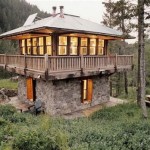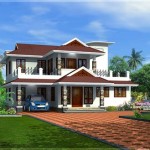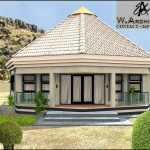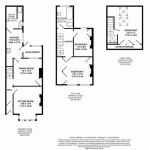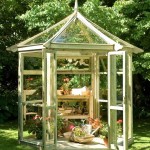One Level Craftsman House Plans: A Deep Dive into Design and Functionality
One level Craftsman house plans offer a compelling blend of architectural charm and practical living. Rooted in the American Arts and Crafts movement of the late 19th and early 20th centuries, these homes emphasize simplicity, natural materials, and exceptional craftsmanship. The single-story design provides accessibility and convenience, making them an appealing choice for various homeowners, including those seeking age-in-place solutions, families with young children, and individuals who prefer a less compartmentalized living space.
The Craftsman style is characterized by its distinctive features. Low-pitched, gabled roofs with wide eaves, exposed rafters, and prominent front porches supported by tapered columns or piers are commonplace. Natural materials such as wood, stone, and brick are extensively used, both inside and out. Large windows, often multi-paned, are designed to maximize natural light and create strong connections to the surrounding environment. Interior details typically include built-in cabinetry, handcrafted woodwork, and open floor plans that foster a sense of spaciousness and flow.
The appeal of a one-level Craftsman design extends beyond its aesthetic qualities. The absence of stairs offers enhanced accessibility for individuals with mobility limitations, making the home adaptable to changing needs over time. Open floor plans contribute to a more social and connected living experience, allowing for ease of interaction between family members and guests. The emphasis on natural light and ventilation creates a healthy and comfortable indoor environment. Furthermore, the single-story layout can simplify maintenance and cleaning tasks, making it a practical choice for busy homeowners.
Key Considerations When Choosing a One Level Craftsman House Plan
Selecting the right one-level Craftsman house plan involves careful consideration of various factors to ensure that the design aligns with your lifestyle, budget, and site conditions. Thorough planning and evaluation are essential for a successful outcome.
First and foremost, determine the desired square footage and number of bedrooms and bathrooms. Consider the size of your family, your anticipated needs for guest accommodations or home offices, and your overall lifestyle. A well-defined spatial program will guide the selection process and ensure that the house plan provides adequate living space for all occupants. Next, evaluate the desired layout and functionality of the interior spaces. Consider whether you prefer an open floor plan that maximizes connectivity or a more traditional layout with distinct rooms. Think about the placement of the kitchen, dining area, living room, bedrooms, and bathrooms, ensuring that they are arranged in a manner that promotes efficient circulation and comfortable living.
Site conditions play a crucial role in determining the suitability of a particular house plan. Consider the topography of the land, the orientation of the house to the sun, and the prevailing wind patterns. A sloping site may require adjustments to the foundation or floor plan, while the orientation of the house will affect the amount of natural light and passive solar heating that it receives. Additionally, the prevailing wind patterns should be taken into account to optimize natural ventilation and minimize energy consumption. Review local building codes and zoning regulations to ensure that the house plan complies with all applicable requirements. Building codes govern various aspects of construction, including structural integrity, fire safety, and energy efficiency. Zoning regulations dictate the allowable size, height, and placement of buildings on a given property.
Budget is another important factor to consider when choosing a one-level Craftsman house plan. The cost of construction will vary depending on the size and complexity of the design, the materials used, and the labor rates in your area. Obtain detailed cost estimates from builders or contractors before making a final decision. The cost of the land itself will also need to be factored into the overall budget. Land prices vary widely depending on location, size, and availability of utilities. Determine the affordability of the land before proceeding with the house design.
Essential Design Features of One Level Craftsman Homes
The defining characteristics of Craftsman architecture translate seamlessly into one-level designs, creating homes that are both aesthetically pleasing and highly functional. These features contribute to the overall charm and enduring appeal of the style. It is important to understand these features to enable informed decision-making when selecting a suitable house plan.
One of the most recognizable features of a Craftsman home is its low-pitched, gabled roof with wide eaves. The eaves provide shade and protection from the elements, while the exposed rafters add a touch of rustic charm. Dormers are sometimes incorporated into the roof to provide additional light and ventilation. The roof is typically covered with asphalt shingles, wood shakes, or clay tiles. A prominent front porch is another hallmark of the Craftsman style. The porch is typically covered by a roof and supported by tapered columns or piers made of wood or stone. The porch serves as an outdoor living space, providing a place to relax and socialize with neighbors. The porch is often decorated with rocking chairs, porch swings, and other outdoor furniture.
Natural materials play a central role in the design of Craftsman homes. Wood, stone, and brick are extensively used, both inside and out. Wood siding is a common exterior cladding material, often combined with stone or brick accents. Interior finishes also emphasize natural materials, with wood flooring, trim, and cabinetry being prevalent. Stone fireplaces are a focal point in many Craftsman homes. Large windows are designed to maximize natural light and create strong connections to the surrounding environment. Multi-paned windows are a common feature, often arranged in decorative patterns. Bay windows and stained-glass windows are also frequently incorporated into the design. The windows typically feature wood frames that match the overall aesthetic of the house.
Interior details are carefully considered in Craftsman homes to enhance their character and functionality. Built-in cabinetry, such as bookshelves, cabinets, and window seats, are common features. These built-ins provide storage space and add architectural interest to the interior. Handcrafted woodwork is another defining characteristic of the Craftsman style. Trim, moldings, and stair railings are often made of wood and feature intricate carvings and details. Open floor plans are frequently incorporated into one-level Craftsman homes to create a sense of spaciousness and flow. The kitchen, dining area, and living room are often combined into a single, open space. This layout promotes social interaction and makes the home feel larger and more inviting.
Adapting One Level Craftsman Plans for Modern Living
While embracing the traditional elements of the Craftsman style, it's possible to adapt one-level house plans to incorporate modern amenities and technologies. This allows for a seamless blend of classic design and contemporary functionality. This adaptation ensures that the home meets the needs of today's homeowners while retaining its distinctive character. The result is a comfortable, efficient, and stylish living space.
Modern kitchens often feature sleek appliances, granite countertops, and ample storage space. Integrating these elements into a Craftsman kitchen can be done without sacrificing the overall aesthetic. For example, stainless steel appliances can be paired with traditional wood cabinetry and hardware. Granite countertops can be chosen in colors that complement the natural materials used throughout the house. Smart home technology can be seamlessly integrated into a one-level Craftsman home. This includes features such as smart thermostats, lighting controls, and security systems. These technologies can be controlled remotely via smartphone or tablet, providing convenience and energy efficiency. Wiring for these technologies needs to be factored into the planning stages.
Energy efficiency is a key consideration for modern homeowners. Incorporating energy-efficient features into a one-level Craftsman house can significantly reduce utility bills and environmental impact. This includes features such as high-performance windows, insulation, and HVAC systems. Solar panels can also be installed on the roof to generate renewable energy. Accessibility is another important factor to consider when adapting a one-level Craftsman plan for modern living. As people age, they may experience mobility limitations. Designing the home to be accessible from the outset can make it easier to live in for years to come. This includes features such as wider doorways, grab bars in bathrooms, and ramps instead of stairs. Incorporating universal design principles ensures that the home is accessible to people of all ages and abilities.
Outdoor living spaces are an increasingly important part of modern homes. Creating a comfortable and functional outdoor living space can extend the living area of the home and provide a place to relax and entertain. This can include features such as patios, decks, outdoor kitchens, and fire pits. Landscaping can also be used to enhance the outdoor living space and create a sense of privacy. Integrating these elements with the Craftsman design emphasizes the connection to the surrounding environment with the natural materials.

One Story Craftsman Home Plan 14566rk Architectural Designs House Plans

Craftsman Style House Plans Big And Small Houseplans Blog Com

One Story Country Craftsman House Plan With Screened Porch Architectural Designs 24392tw Plans

Great One Level Floor Plan W24041bg Craftsman House Plans Home Designs Suggestions From A Space Planner 1 How To New

Craftsman House Plans Style Home The Designers

Craftsman Style House Plans Big And Small Houseplans Blog Com

4 Bedroom 1 Story Modern Farmhouse Style Plan With Outdoor Living Area And Bonus Room Westchester Craftsman House Plans

One Level Craftsman House Plan With Angled 2 Car Garage 360033dk Architectural Designs Plans

Durham Drive Craftsman House Plans Ranch

Craftsman Style House Plans Big And Small Houseplans Blog Com

